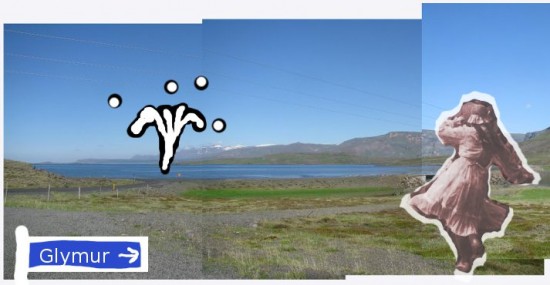Hiding in plain sight: Hvalfjörður. Posted by hulda on Jun 16, 2014 in Icelandic culture, Icelandic history
When you hear of Hvalfjörður from the locals it’s often spoken of as how to avoid it. This time you should not listen to the advice: there’s clear logic behind wanting to avoid going there but it’s definitely not because the place wasn’t worth a visit!
No, what Icelanders usually think of when Hvalfjörður is mentioned is that it’s huge and that it takes an hour to drive around it while going across the fjörður via the tunnel only takes a few minutes. Many of them may be old enough to remember a time when the tunnel was not yet there and the frustrating drive around it whenever you wanted to go north, because there really was no other option. Our professor told us a story of her childhood how she sat, bored half dead, in the back of the car, envying the cars she could see on the other side of the fjörður who had already almost gone through it… and of course the moment her parents’ car turned to travel the other side her boredom was made a little bit better by watching cars that were still on their way there.
Therefore an Icelander will easily advice you to take the tunnel instead. In fact, if you’re planning a trip north it does save you a full hour on driving time and the tunnel fee (1000kr) will feel rather easy in comparison. But if you’re in Reykjavík for a short time and would like to see Icelandic nature, hike on relatively easy routes and perhaps add a bit of local mythology to your day, Hvalfjörður is definitely a place you should go to.
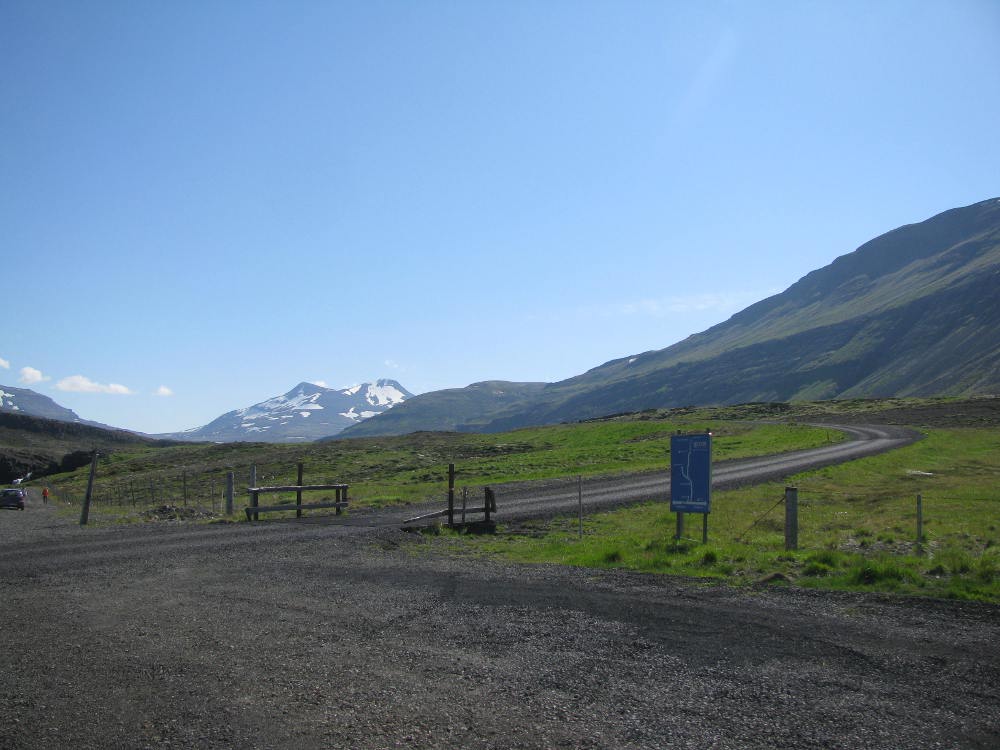 One idea is to first drive to the bottom of the fjörður, park your car at the very end (there’s a small area meant for parking) and then walk around as much as you like. Are you a seasoned hiker? Why not take the whole route to the waterfall Glymur and Hvalvatn above it, the scenes on the hiking trail are breathtaking! Or if you’d rather not walk that long, why not check just the area at the old bridge and the smaller, yet beautiful waterfall right by the road?
One idea is to first drive to the bottom of the fjörður, park your car at the very end (there’s a small area meant for parking) and then walk around as much as you like. Are you a seasoned hiker? Why not take the whole route to the waterfall Glymur and Hvalvatn above it, the scenes on the hiking trail are breathtaking! Or if you’d rather not walk that long, why not check just the area at the old bridge and the smaller, yet beautiful waterfall right by the road?
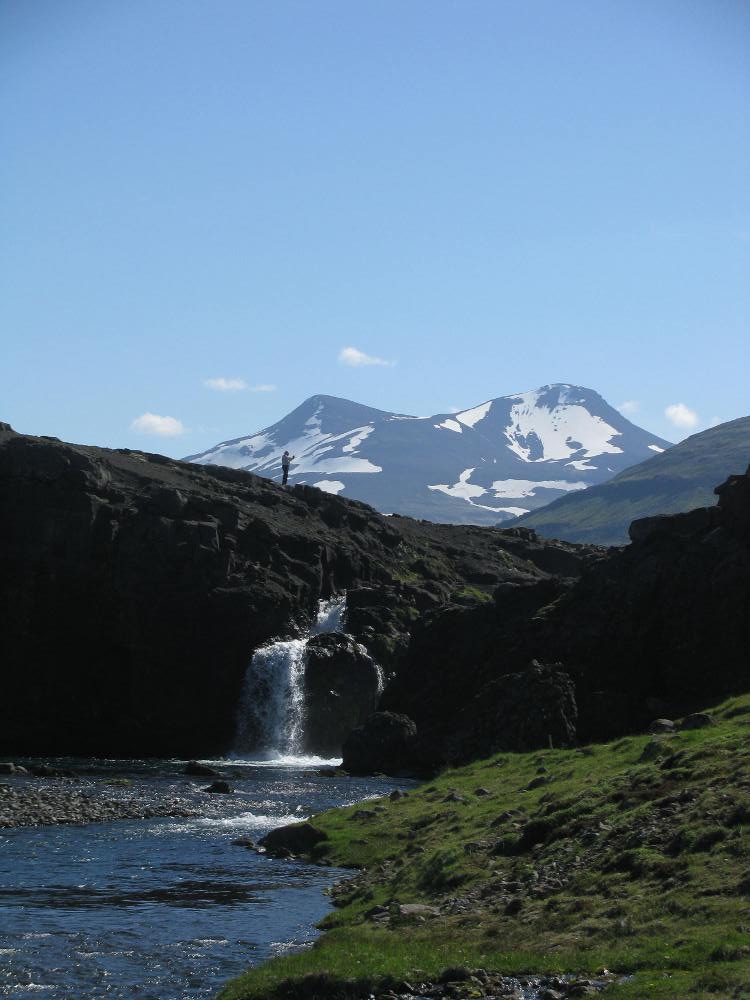 As you can see it’s possible to walk right up to the waterfall. First cross the old bridge and take the path to the right until you get there. The old bridge itself is interesting because it used to be one of the main features on your way around the fjörður before the new road and the new bridge were built, it was where the bored little travelers on the backseat knew that the long drive was halfway done.
As you can see it’s possible to walk right up to the waterfall. First cross the old bridge and take the path to the right until you get there. The old bridge itself is interesting because it used to be one of the main features on your way around the fjörður before the new road and the new bridge were built, it was where the bored little travelers on the backseat knew that the long drive was halfway done.
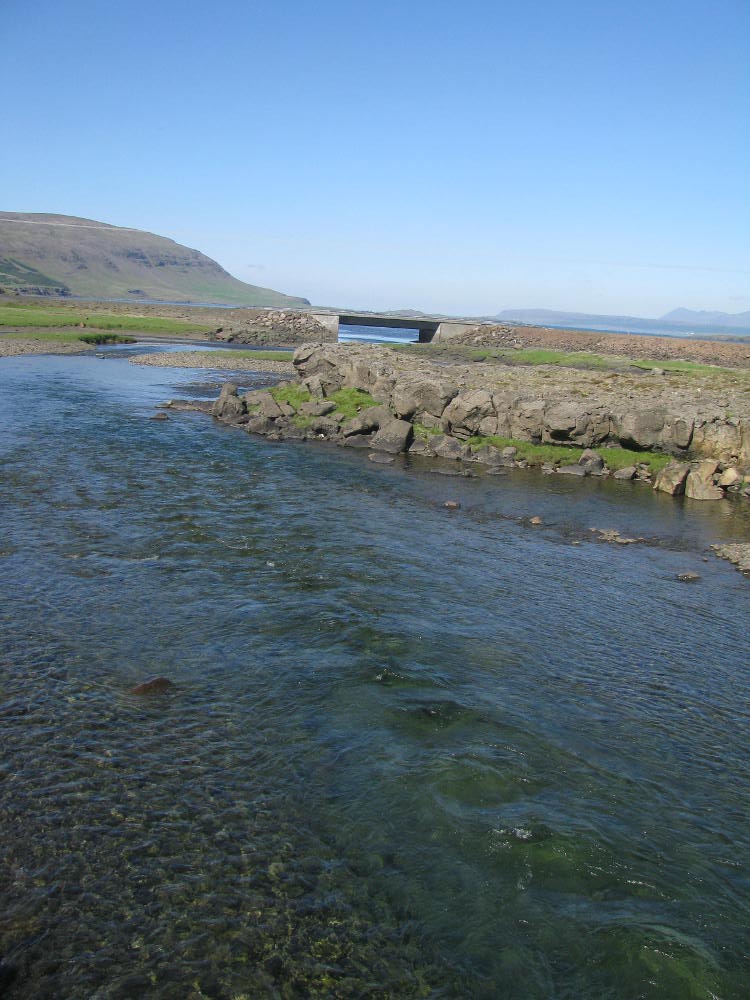 A view to the new bridge from the old one. The water in the river is crystal clear. A word of warning though, it looks shallow but the centre is deep at places and depending on the time of the year the stream may be strong. As with most rivers in Iceland letting your children wade in them unsupervised is a bad idea.
A view to the new bridge from the old one. The water in the river is crystal clear. A word of warning though, it looks shallow but the centre is deep at places and depending on the time of the year the stream may be strong. As with most rivers in Iceland letting your children wade in them unsupervised is a bad idea.
 Here’s the old bridge sitting by the mountains, you can see the path leading up to the little waterfall climbing up on the right side of it.
Here’s the old bridge sitting by the mountains, you can see the path leading up to the little waterfall climbing up on the right side of it.
 A lifeline across the mountains: if you travel Iceland you’ll see these electric lines here and there, and in areas that make you wonder who on earth could bright them there, how was it even possible to build them where they stand now. Some people don’t like the way they look but I find them fascinating for the above-mentioned reason, and besides they really are the best option for distributing electricity (definitely better than digging up the scenery to put them underground)(not to mention that due to the high seismic activity of Iceland underground wires are in general a worse idea).
A lifeline across the mountains: if you travel Iceland you’ll see these electric lines here and there, and in areas that make you wonder who on earth could bright them there, how was it even possible to build them where they stand now. Some people don’t like the way they look but I find them fascinating for the above-mentioned reason, and besides they really are the best option for distributing electricity (definitely better than digging up the scenery to put them underground)(not to mention that due to the high seismic activity of Iceland underground wires are in general a worse idea).
 A varða looking over the end of the fjörður. I wrote more about them here – what they are, where you’ll see them, what purposes do they serve and most importantly who built them.
A varða looking over the end of the fjörður. I wrote more about them here – what they are, where you’ll see them, what purposes do they serve and most importantly who built them.
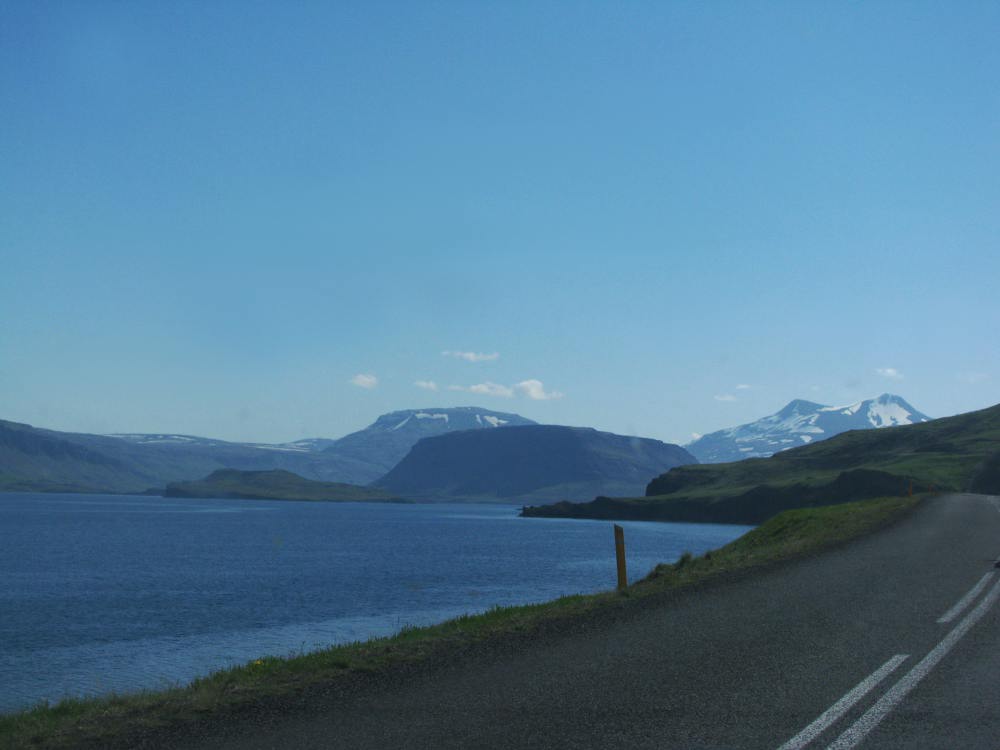 Such idyllic scenery holds naturally countless folk stories within itself. The elf activity around Hvalfjörður is said to be high, there are places where you shouldn’t cut grass or even venture near and so forth. The elves even had their hand in in naming Hvalfjörður (= whale fjord), the waterfall Glymur (= rumble) and the Hvalvatn (= whale lake).
Such idyllic scenery holds naturally countless folk stories within itself. The elf activity around Hvalfjörður is said to be high, there are places where you shouldn’t cut grass or even venture near and so forth. The elves even had their hand in in naming Hvalfjörður (= whale fjord), the waterfall Glymur (= rumble) and the Hvalvatn (= whale lake).
Once there was a young man who angered an elf lady. She took her revenge by turning him into a whale, read-headed since he had at the time been wearing a red cap on his head, and was therefore called Rauðhöfði (= red head). He was mad with anger and attacked ships and men whenever he could.
“Á þessum tíma var prestur í Saurbæ á Hvalfjarðarströnd sem bæði var orðinn gamall og blindur. Hann átti tvo sonu og eina dóttur sem öll voru upp komin og hin mannvænlegustu. Synir hans reru oft út á fjörð til fiskjar. Einu sinni urðu þeir fyrir Rauðhöfða og drekkti hann þeim báðum.”
“At the time there was a priest at Saurbæ in Hvalfjörður who had become both old and blind. He had two sons and one daughter who were all grown up and most promising. His sons often rowed out into the fjörður to fish. One time they came across Rauðhöfði and he drowned them both.”
The old priest naturally took this badly. He went out with his daughter and asked her to show him the way, and when they got to the water he dipped his walking stick into the fjörður.
“Spyr hann svo dóttur sína hvernig sjórinn líti út, en hún segir hann spegilfagran og sléttan. Litlu seinna spyr prestur aftur hvernig sjórinn líti út. Þá segir stúlkan að utan fjörðinn sjái hún koma kolsvarta rák ösli inn fjörðinn.“
He asks then his daughter how the sea looks like and she says it to be mirror-beautiful and smooth. A little later the priest asks again how the sea looks like. Now the girl says that from outside she sees a coal-black stream entering the fjörður.”
The priest and his daughter then walked up the fjörður, all the way to the end of it and continued along the river. The whale followed them all the time and even though the river was not large it forced its way after them. When they got to the waterfall the whale trashed so violently that the ground shook all around them and the noise it made is why the waterfalls are now called Glymur and its sides Skjálfandahæðir (= shaking hills).
“En prestur hélt ótrauður áfram og hætti ekki fyrr en hann kom hvalnum upp í vatn það sem Botnsá fellur úr og síðan er kallað Hvalvatn. Þegar Rauðhöfði kom í vatnið, sprakk hann af áreynslunni við að komast þangað upp.”
But the priest nonetheless continued and did not stop until he came to the lake where the river Botnsá comes from, which is now called Hvalvatn. When Rauðhöfði arrived to the lake he exploded out of the strain that traveling all the way up there had put him in.
The end!
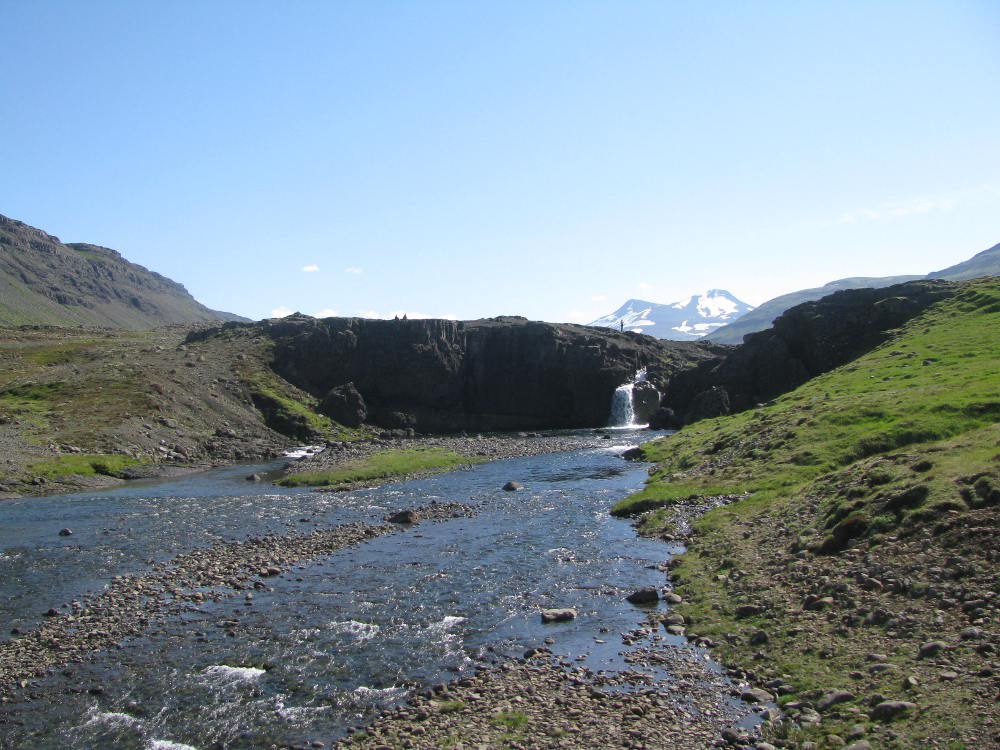 Quite an interesting story, but what could have been so bad in the eyes of the elf lady that she’d curse a man and have everyone else bear the results of his actions?
Quite an interesting story, but what could have been so bad in the eyes of the elf lady that she’d curse a man and have everyone else bear the results of his actions?
After this it’s said that the man ran until he came to the sea where he suddenly became so huge and heavy that the cliffs broke from underneath him, and he tumbled into the water as a whale. By the way, the quilt that the elf lady was said to have thrown into the church actually exists! I saw it two summers ago at an exhibition at Akureyri where they were showing lots of elf-made objects.
Other entries of this series:
Seltjarnarnes and the lighthouse there.
Hidden by the shadow of the church downtown.
Snæfellsnes and its giant-troll-man.
Harbour and its secrets.

Build vocabulary, practice pronunciation, and more with Transparent Language Online. Available anytime, anywhere, on any device.
About the Author: hulda
Hi, I'm Hulda, originally Finnish but now living in the suburbs of Reykjavík. I'm here to help you in any way I can if you're considering learning Icelandic. Nice to meet you!



